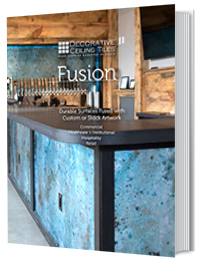Tips for How to Install Crown Molding Corner Blocks
Written by Milan Jara on 22nd Aug 2022

Looking for a simpler but more decorative solution for your crown molding? We provide tips on how to install crown molding corner blocks.
For an easier crown molding installation, consider incorporating corner blocks. In the end, installing this beautiful architectural trim will make your room more striking. This added detail can change the feel of a room, bringing it from ordinary to elegant or upscale. Here are tips on how to install crown molding corner blocks.
Things to Consider
Although most block crown molding is wood, you can select alternative materials, like plastic or Styrofoam, that are easier to install. You can also finish these materials to look like wood but are more cost-effective.
When choosing corner molds, ensure the design goes with the style of the room. Corner moldings usually have more detail than regular wall molding, so you must select the appropriate one.
Experts recommend using finish screws that sit below or flush with the surface and have a small flat head on top of the threads. These screws make for an easier installation, and the molding appears more professionally installed.
Corner Blocks Sizes

Corner blocks come in five sizes: mini, small, medium, large, and giant. The size you use should match the type of crown molding used and may depend on how much of a statement you want to make. Choose a size that goes with the crown molding but is not too oversized. If you use one that is too big, it won’t look right when you put it into place.
How to Install Crown Molding Corner Blocks

First, count the inside and outside corners and measure your walls to determine how much crown molding you need. Always buy a little extra, just in case. Corner blocks should be big enough for your crown molding profile and match the crown molding style.
Here is how to install crown molding corner blocks:
1. Look for Anything That Can Interfere with Your Molding
Check the ceiling and walls in the room where you are installing the molding for holes, bumps, or excessive texture that may interfere with your molding installation. Scrape problem areas with a putty knife or stand with a fine-grit sandpaper.
2. Using Different Types of Nails
Hold each block in position with its top flat against your ceiling. The edges should lie flat against the walls on either side.
Brad Nails
Hold the crown corners firmly to the ceiling and wall and, using a 2” brad nail gun, angle and place a few brad nails into your crown corners about ¾” from the wall’s edge and ceiling. Your crown molding, once installed, should hide nail holes without putty.
Liquid Nails/Panel Adhesive
Only use a liquid nail brand identified as panel adhesive on its tube. Panel adhesive is thicker, holding the corner adequately in place and providing increased stability with less mess. Place a bead on the block edge area of your crown corners for instant mounting. Using a small amount of masking tape will hold the corner blocks in place and allow the adhesive to set correctly.
Pre-Drill Holes and Screw
Holes can be pre-drilled in a corner block if you prefer to do a screw mounting. You should drill holes at an angle into the corners ¾” from the wall’s edge and the ceiling. Screws should be 2” or longer to properly mount your crown corners into position. Again, the crown molding, once installed, should hide screw heads.
3. Measure the Distance Between Corner Blocks
You should measure the distance between the corner blocks to determine how long the crown molding should be. Always add 1/8” to your measurement, and transfer your measurement to the front of your crown molding. Mark the piece for a square cut. Repeat for each wall section.
Put the molding in your miter box. The mark on the crown molding should line up with the 90° slot. Hold it securely using a clamp and cleanly cut along the line with a backsaw. Lightly sand the cut end if needed.
4. Put Your Crown Molding Between Your Corner Blocks

Using a stud finder, mark where each stud is using either a pencil or a piece of masking tape. Place it below where the molding will go on the wall as a reference. Put a nail into the crown molding at each wall stud to hold it in place.
To prevent denting, use a nail set to complete the installation. You may require help holding up long pieces to nail them into place. It will be necessary to bow the molding in the middle while positioning lightly. If it is too snug, sand or trim the molding a bit.
Continue this method until all the crown molding is installed. You can use a nail set to recess the heads of brad nails if needed.
Next, use latex caulk, white spackle, filler stick, or wood putty to cover any noticeable holes. Allow whatever compound you use to dry thoroughly. Then, lightly sand it until smooth. You can also apply a bead of caulk where your molding meets your walls or ceiling to close any noticeable gaps. Touch it up with a stain or paint if necessary.
Installing crown molding corner blocks is a straightforward process. Just attach them to the wall using about three screws to hold them into place. Then, measure and add the crown molding. While the cuts for the crown molding will be different, using crown blocks simplifies the entire installation since you are not adding additional amounts of molding for the corners.




